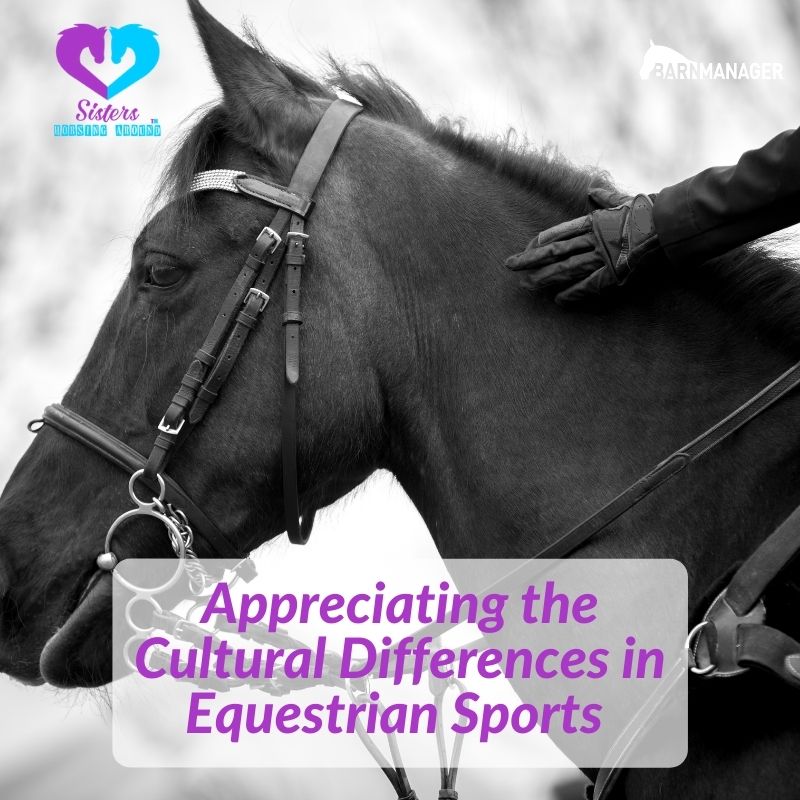
Appreciating the Cultural Differences in Equestrian Sports
Written by Emily & Sarah Harris, Sisters Horsing Around

What is Culture?
Simply put, culture is a way of life for a particular group of people that can encompass shared beliefs, practices, behaviors, and values. It can include how they talk, how they dress, their appearance, and other things that are unique to the group. We understand that there are different cultures based on race, such as black culture and Hispanic culture; cultures based on religion, including Christian culture and Hindu culture; ones based on geographic location, such as western culture and eastern culture; some based on interests, like gaming culture and biker culture; and so on. There are even cultures based on music, like hip hop culture and rock culture.
Just like in the rest of society, culture variation exists in the horse world among equestrians. The equestrian world is beautifully diverse with lots of different disciplines and areas of interest. There are English riding disciplines and Western riding disciplines, and there are various others like horse racing, vaulting, trail riding, and driving, just to name a few.
There are a lot of people that participate in each and each has its own culture. These cultural differences include myriad ways of dressing, language, cultural norms, traditions, and even etiquette. But despite those differences, we all have one thing in common, which is our love for the horse.
Who Are We?
We – Emily and Sarah – are multi-discipline riders and as such we are part of multiple “cultures” in the equestrian world. Through our experiences as members of these different cultures, we have heard some things that concern us. Our concerns relate to the unfair stereotypes, biases, and prejudices that exist between the different disciplines.
We have heard disparaging comments made by those in one group of equestrians about other groups of equestrians. English riders have labeled Western riders as “rednecks.” Western riders have called English riders “sissies.” Eventers refer to hunters as “snobs” and hunters see eventers as “slobs.”
We have heard Saddle Seat riders called out for being “abusive” to their horses. We have heard riders who train with trainers condescendingly look down on riders without trainers as “backyard” riders. You may be familiar with hearing these stereotypes yourself.
Why Stereotyping is Dangerous
Stereotyping equestrians like this is a dangerous thing because it is counter-productive and divisive. It limits the growth of one’s perspective and creates misunderstanding. It also fosters attitudes of supremacism, where one group of equestrians think they are better than another group. This is what we should guard against.
Instead, we should be willing to listen and learn, broaden our viewpoints, and open our minds to understanding. In order to counteract negativity and push towards change, we need to demonstrate and promote a positive cultural appreciation for the different equestrian sports. There are a lot of good and admirable things that we could learn from each discipline.
What Should We Do?
So, how should we go about creating and promoting appreciation across different disciplines? First, we need to recognize that the people within each discipline are more than just a group; they are individuals, just like me and you. Then we need to set aside our biases. Be willing and open to listen and learn from others about what they do and why they do it. Try to gain an understanding, ask questions in a non-demeaning way, and be humble. Glean what information you can from multiple sources. There are so many different viewpoints, and not one is the same. People within the different disciplines typically enjoy sharing with others why they love what they do and will be ecstatic to answer your questions.
To put this into practice is only the beginning. The journey towards building a cultural appreciation for the different disciplines will never end because we will never stop learning. But the benefits we will get as a result of our efforts will be tremendous. As you gain a better appreciation for the disciplines, encourage others to learn as well. Don’t stop at accomplishing this for yourself; get others involved so that we all can work toward making the equestrian world a better place for everyone involved.
In future posts, we will share more details about the cultural differences that exist in various equestrian disciplines and we will explain what makes each one unique and exciting. Be sure to keep a lookout!